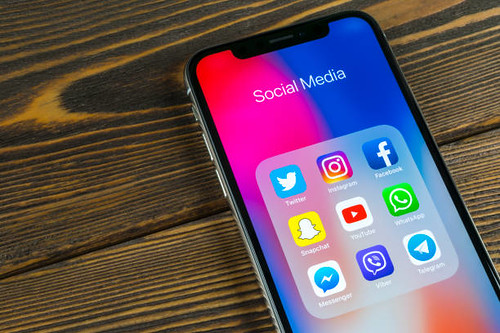The digital age – a time where a single tap can transport us into the lives of friends, family, and even strangers. It’s a world where the lines between public and private are constantly blurred, and where the tools we use to connect can just as easily become sources of contention. Take, for instance, the curious case of Snapmap and the party you weren’t invited to. It’s a tale as old as time (or at least as old as Snapchat) – the feeling of being left out, the curiosity piqued by a social media post, and the subsequent drama that unfolds when digital etiquette is called into question.
Let’s set the scene: your friend, let’s call him ‘Party Poster,’ decides to throw a bash and share the festivities on Snapchat. You, on the other hand, are at home, scrolling through stories, when you stumble upon Party Poster’s snaps. It’s human nature to be curious, and with Snapmap just a few swipes away, it’s almost too easy to check out the location of the latest social gathering. So, you give in to temptation and take a peek. Harmless, right?
Not according to Party Poster, who seems to think that your map-checking move was a step too far. Before you know it, you’re being reported to the school dean for being ‘creepy.’ But let’s pump the brakes for a second – was your action truly a breach of social media etiquette, or was it a reasonable use of a feature that’s openly available to Snapchat users?
Snapchat, the brainchild of Evan Spiegel, Bobby Murphy, and Reggie Brown, has always been about ephemeral moments – those fleeting snapshots of life that disappear into the ether. But with the introduction of Snapmap, the app added a new layer to its service: real-time location sharing. This feature, while innovative, has raised eyebrows and concerns among cyber safety experts, parents, and users alike.

The incident with Party Poster isn’t just about a party you missed out on; it’s indicative of a larger conversation about privacy, consent, and the unspoken rules of social media. When Party Poster uploaded his story, he shared a piece of his life with his Snapchat friends, location included. By doing so, he invited viewers into that moment. But when does an invitation to view become an invasion of privacy?
Cyber safety experts, like Jordan Foster of ySafe, have highlighted the potential dangers of Snapmap. The feature’s ability to pinpoint exact locations can lead to unintended consequences, such as gatecrashing, stalking, or even more serious incidents like the alleged assault in Melbourne. It’s a stark reminder that the tools designed to bring us closer can also expose vulnerabilities.
The question of what you did ‘wrong’ is a complex one.
On one hand, Snapmap is a feature that exists for the purpose of location sharing. Users have the option to go into ‘Ghost Mode’ or limit who can see their location, but Party Poster chose not to. On the other hand, there’s an argument to be made about the ethics of checking someone’s location, especially if it’s not for a mutually agreed-upon purpose like meeting up.

The story Party Poster shared had the location, but you weren’t aware and checked Snapmap out of curiosity. His reaction suggests a disconnect between the expectation of privacy and the reality of the app’s features. It’s a digital faux pas that many of us could unwittingly make, given the casual way we often navigate social media.
Where do we draw the line? It’s a question without a straightforward answer. Social media etiquette is still a relatively new concept, and as such, it’s constantly evolving. What’s considered acceptable today might be taboo tomorrow. The key is to navigate these platforms with a sense of respect for others’ boundaries, while also understanding the capabilities and risks of the features we use.
In the case of Snapmap, it’s essential to recognize that while the feature can be fun and useful, it also comes with responsibilities. Users should be mindful of their privacy settings and consider the potential implications of sharing their location. And for those on the viewing end, perhaps it’s wise to exercise restraint and consider the intentions behind wanting to know someone’s whereabouts.
Explore the safety concerns, privacy settings, and the social dynamics at play.
It’s a conversation that’s not just about one party or one app, but about how we interact in the digital space that’s become an extension of our personal lives. Stay tuned as we unpack the complexities of Snapmap and learn how to use it responsibly, respectfully, and safely.
Diving into the second section of our digital conundrum, we’re going to unravel the threads of Snapmap’s fabric – a feature that’s as innovative as it is controversial. Snapmap, for the uninitiated, is a real-time location-sharing tool within Snapchat that allows users to see where their friends are hanging out, provided they’ve consented to share their location. But as we’ve seen, the implications of such a feature are far-reaching and multifaceted, touching on safety, privacy, and the intricate social dynamics of our online interactions.
Let’s start with safety, a paramount concern in today’s interconnected world. The incident in Melbourne, where a group of teenagers allegedly used Snapmap to gatecrash a party, resulting in a serious assault, is a chilling reminder of the potential risks. It’s a stark example of how technology can be misused, leading to real-world harm. Cyber safety experts, like Jordan Foster, have rightly pointed out that the feature’s ability to pinpoint exact locations can be a double-edged sword. While it can foster a sense of community and connection, it can also be exploited for nefarious purposes such as stalking, bullying, or worse.
The privacy aspect of Snapmap is equally complex.
When users share their location, they’re trusting the platform and their friends with sensitive information. But what happens when that trust is breached, either intentionally or inadvertently? The story of the party you weren’t invited to is a case in point. Your friend shared his location via his Snapchat story, which, in turn, was visible on Snapmap. By checking the map, you stumbled into a gray area of privacy ethics. Was it an invasion of privacy, or was it a reasonable action given the information was publicly shared? The lines are blurry, and the rules of engagement are still being written.
Snapchat has attempted to address these concerns by allowing users to control who can see their location through settings like ‘Ghost Mode’. However, not everyone is aware of these features or understands their importance. The case of Amber Kelly, who uses Ghost Mode when she gets home, demonstrates a proactive approach to managing one’s digital footprint. But for every Amber, there might be others who are unaware of the risks or how to mitigate them.
The social dynamics at play with Snapmap are equally intriguing.
The feature can be a tool for socializing, as young people like Alex Cimino use it to coordinate with friends during a night out. It’s a digital extension of our social lives, offering convenience and immediacy. However, as Ms. Foster points out, the same information can be used in toxic ways, such as controlling behavior in relationships. The balance between using Snapmap as a social facilitator and guarding against its potential misuse is delicate and requires a nuanced understanding of the platform.
How should one navigate the use of Snapmap? The answer lies in a combination of personal responsibility and digital literacy. Users should educate themselves on the privacy settings available and make informed decisions about what they share. It’s also crucial to respect others’ boundaries and to think twice before using location information in a way that could be perceived as intrusive or inappropriate.
In light of these discussions, it’s clear that the incident with your friend is not just about a party or a perceived social faux pas. It’s about the broader implications of our digital actions and the need for a collective understanding of privacy and consent in the online realm. The fact that Snapchat’s ‘heat spots’ are designed with a degree of imprecision is a nod to these concerns, but it’s only a part of the solution.
As we continue to integrate social media more deeply into our lives, we must also evolve our understanding of the etiquette and ethics that come with it. The digital landscape is ever-changing, and with it, our social norms must adapt. Whether it’s through education, dialogue, or personal reflection, we must all take part in shaping a digital world that respects privacy, prioritizes safety, and fosters positive social interactions.
The story of the party, Snapmap, and the ensuing drama is a microcosm of the larger digital world we inhabit. It’s a reminder that with great technology comes great responsibility – both for the creators of these platforms and for us, the users. By approaching social media with mindfulness and a commitment to ethical behavior, we can enjoy the benefits of connectivity without sacrificing our safety or privacy. It’s a delicate dance, but one that’s well worth mastering for the sake of our digital well-being.
Related posts:
Safety concerns for Snapchat feature Snap Maps, experts say turn on Ghost Mode to prevent stalking
Wikipedia
Is Snapchat’s Snap Map putting your home at risk? – Deseret News





